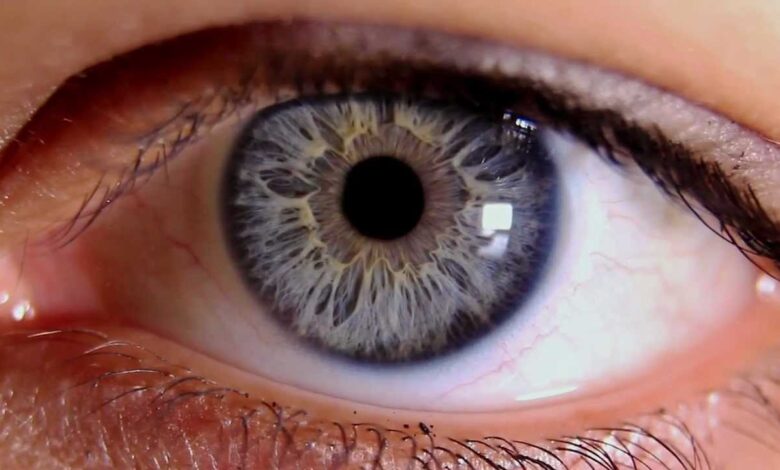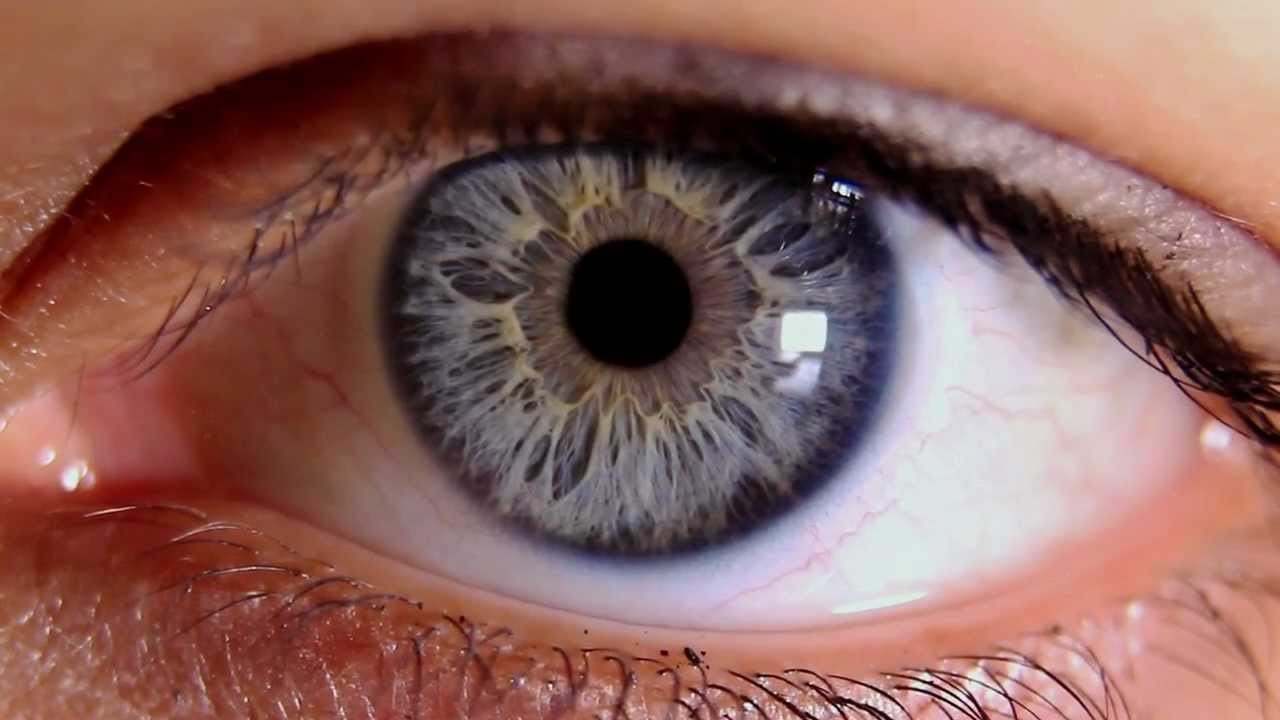How Much Fps Can the Human Eye See? Unveiling the Visual Perception

The human eye can see up to 60 frames per second (fps). The human eye can perceive up to 60 frames per second (fps), which means that any frame rate faster than this is indistinguishable from the human eye.
The human eye is an incredible organ that allows us to perceive the world around us. It can see a wide range of colors, depths, and details, creating a rich and vivid visual experience. One factor that impacts our visual perception is the frame rate at which images are presented to us.
Frame rate refers to the number of individual frames displayed per second, and it plays a crucial role in creating smooth and fluid motion on screens. But how much fps can the human eye see? We will delve into this question, exploring the limits of our visual perception and understanding the implications it has on various technologies, such as gaming, film, and virtual reality.
The Anatomy Of Human Vision

To understand how much FPS (frames per second) the human eye can see, it’s essential to delve into the fascinating anatomy of human vision, a topic that also relates to inquiries such as whether are fleas visible to the human eye. Our eyes are remarkable organs designed to gather and process visual information, allowing us to perceive the world around us. They are capable of detecting a wide range of visual stimuli, from large objects to minute details, albeit with limitations. This understanding of the capabilities and limitations of our vision is crucial in various applications, from designing effective visual displays to creating engaging multimedia content. By exploring the intricacies of the human eye, we can better appreciate the balance between physiological capabilities and technological advancements in visual media.
Structure Of The Eye
The eye is a complex structure composed of several crucial components. The main parts include the cornea, iris, lens, retina, and optic nerve. Each of these elements plays a vital role in capturing and transmitting visual information to the brain.
Function Of Rods And Cones
The retina, located at the back of the eye, contains specialized cells known as rods and cones. These cells are responsible for converting light into electrical signals that the brain can interpret as images. While both rods and cones contribute to our visual perception, they function differently.
Rods: These cells are highly sensitive to light and are primarily responsible for our vision in low-light conditions. They help us perceive shapes and movement, but they do not detect color. With approximately 120 million rods in each eye, they are densely populated in the peripheral areas of the retina.
Cones: In contrast to rods, cones are responsible for our ability to perceive colors and fine details in well-lit conditions. There are three types of cones, each sensitive to different wavelengths of light: red, green, and blue. With approximately 6 million cones in each eye, they are concentrated mainly in the center of the retina, known as the fovea.
The following table summarizes the key differences between rods and cones:
| Rods | Cones | |
| Light Sensitivity | High (function well in low-light conditions) | Low (require well-lit conditions for optimal functioning) |
| Color Perception | Black and white | Red, green, and blue (responsible for color vision) |
| Distribution | Peripheral areas of the retina | Concentrated mainly in the fovea (center of the retina) |
By working together, rods and cones allow us to perceive the vibrant world filled with a wide range of colors, shapes, and movements. Understanding their functions provides insight into the limitations and capabilities of human vision, including the perception of FPS.
Understanding Frames Per Second (fps)
Frames Per Second (FPS) is a crucial concept in the world of visual perception. It determines the smoothness and fluidity of motion in videos, animations, and video games. In this section, we will delve deeper into the definition and importance of FPS in our visual experiences.
Definition Of Fps
FPS, an abbreviation for Frames Per Second, refers to the number of individual frames or images displayed per second in a video or animation. It is a measurement of the speed at which consecutive images are presented to create the illusion of motion.
The human eye can perceive motion and changes in visual stimuli at a certain threshold, which varies from person to person, a concept also discussed in the Anxiety Fighters Guide. The ability of our eyes to see individual frames is limited, but an adequate number of frames per second can create the illusion of continuous motion, leading to a smooth and realistic visual experience. This perception is crucial in various fields, from film and animation to virtual reality and video gaming. Understanding how the human eye perceives motion can also help reduce visual stress and strain, which is particularly important for those who may experience anxiety or discomfort when exposed to rapidly changing or flickering images. This knowledge helps in creating visual content that is both comfortable and enjoyable for the widest possible audience.
Importance In Visual Perception
The significance of FPS in visual perception cannot be overstated. It directly impacts our immersion in videos, movies, and video games, making them appear lifelike and engaging. Here are a few key reasons why FPS is vital:
- Smoothness of motion:
A higher FPS results in smoother motion, reducing the choppiness and jittery appearance of fast-moving objects. This allows our eyes and brain to process the visual information more seamlessly, resulting in a more comfortable viewing experience.
- Realism and immersion:
Higher FPS values contribute to a more realistic and immersive experience. The smoothness and fluidity of motion make the visual content feel more natural, enhancing the sense of presence and realism in virtual environments.
- Response time:
In interactive applications like video games, a higher FPS reduces the delay or latency between user input and the corresponding visual feedback. This minimizes the perception of lag and improves the responsiveness of the gameplay, leading to a more enjoyable and engaging experience.
- Perceived image quality:
A higher FPS can enhance the perceived image quality by reducing motion blur and providing more precise and detailed visuals. This is particularly important in fast-paced action scenes or when tracking fast-moving objects.
Understanding the role of FPS in our visual perceptions allows us to appreciate its impact on the quality and enjoyment of videos, movies, and video games. Whether you are a casual viewer or a passionate gamer, having a basic understanding of FPS helps you make informed choices about the media you consume and the equipment you use.
Factors Affecting FPS Perception
The perception of frames per second (FPS) by the human eye is influenced by several factors such as individual visual acuity, environmental lighting, and the specific activities involved. While the eye can perceive a wide range of FPS, the overall experience is also influenced by the quality and settings of the display device.
Factors Affecting FPS Perception The human eye’s ability to perceive frames per second (FPS) is influenced by various factors, leading to individual variations and external influences on the experience. Understanding these factors is crucial for optimizing visual experiences such as gaming, video streaming, and virtual reality.
Individual Variations Individual variations play a significant role in how FPS is perceived. The sensitivity of one’s retina, visual processing speed, and overall visual acuity varies from person to person. Factors such as age, genetics, and overall eye health can influence an individual’s ability to perceive high FPS. Additionally, personal preferences and past exposure to high FPS content can also impact how effectively an individual perceives and appreciates different frame rates.
External Influences External influences encompass environmental factors that can affect FPS perception. Lighting conditions, display quality, and the presence of visual distractions all play a role in how smoothly and accurately FPS can be perceived. For example, a dimly lit room may lead to reduced visual acuity, impacting the ability to discern higher FPS, while a high-quality display can enhance the overall visual experience, making higher FPS more discernible.
In summary, understanding the individual variations and external influences that affect FPS perception is vital for creating and optimizing visual experiences, allowing for smoother and more immersive displays across various mediums.
Beyond The Limit: High Fps Technology
Advancements in technology have paved the way for breathtaking visuals in the realm of gaming and multimedia. One key aspect that has seen significant improvements is the frame rate, or frames per second (FPS), at which images are displayed on our screens. The human eye can perceive changes in motion up to a certain FPS threshold, but with high FPS technology, we can now experience visuals that go beyond the limits of our natural perception.
Advancements In Display Technology
The continuous advancements in display technology have allowed for the creation of screens capable of achieving incredibly high frame rates. Traditional displays typically operated at 60 FPS, but with the introduction of technologies like high refresh rate displays and adaptive sync, we are now venturing into the territory of 144hz, 240hz, and even higher refresh rates. These high FPS displays ensure smoother animation, reduced motion blur, and an overall enhanced visual experience.
Impact On User Experience
The impact of high FPS technology on user experience is undeniable, especially in the gaming industry. Games running at higher frame rates provide players with a more immersive and responsive experience. The fluidity of movement and increased responsiveness translate into faster reaction times, enabling gamers to have a competitive edge. Moreover, high FPS technology eliminates the choppy visuals and motion artifacts that can be distracting, creating a more visually enjoyable experience.
Beyond gaming, high FPS technology finds applications in various other fields such as virtual reality (VR) and motion picture industries. In VR, the smooth motion tracking provided by high FPS displays reduces motion sickness and enhances the feeling of presence. In the motion picture industry, high FPS projections create stunningly realistic visuals, bringing movies to life with incredible detail and clarity.
With these advancements, high FPS technology is revolutionizing the way we perceive and interact with visual content. The ability to push the boundaries of human perception and display visuals beyond what the naked eye can see adds a new dimension to our digital experiences.
Practical Applications And Considerations

The human eye can perceive up to 60 frames per second, making it a crucial consideration for practical applications relying on visual perception. It’s important to understand the human eye’s limitations when it comes to displays and video content.
Gaming Industry
The gaming industry has experienced tremendous growth over the years, with advancements in technology pushing the limits of what is possible. The question of how much FPS (frames per second) the human eye can see is of great interest to game developers and players alike. Is there a limit to how much FPS we can perceive? Understanding this concept is crucial for creating immersive gaming experiences.
So, how much FPS can the human eye see? The answer lies in the individual variability and the conditions in which the FPS is presented. While the average human eye can typically detect up to 60 frames per second, some individuals trained in perceptive skills might be able to spot upwards of 75 to 90 FPS. The key takeaway here is that the human eye has limitations, but some factors can influence our perception.
When it comes to the gaming industry, finding the perfect balance between visual fidelity and frame rate is essential. While higher FPS can provide smoother gameplay and more responsive controls, it also requires more processing power and can strain hardware limitations. This is where game developers need to make strategic decisions based on the preferences of their target audience.
Video Content Consumption
It’s not just the gaming industry that benefits from understanding the human eye’s perception of FPS. Video content consumption, whether it’s movies, TV shows, or online videos, is a significant part of our daily lives. The quality of the viewing experience largely depends on the frame rate at which the content is played.
Moreover, some individuals with sharper visual acuity may be able to notice a difference between lower and higher FPS. For them, a higher frame rate can make a video feel more engaging and immersive. This is particularly relevant for content creators who aim to captivate and retain the attention of their viewers.
Understanding the practical applications and considerations of the human eye’s perception of FPS is valuable for both the gaming industry and video content consumption. By taking into account these factors, developers and content creators can make informed decisions to provide the optimal viewing experience for their audiences.
Frequently Asked Questions Of How Much Fps Can The Human Eye See
What Is The Maximum Number Of Frames Per Second (fps) The Human Eye Can See?
The human eye can see up to 60 frames per second (FPS) for normal motions. However, some studies suggest that the human visual system can perceive up to 200 FPS in certain conditions.
Can The Human Eye See A Difference In Fps Beyond 60?
Yes, the human eye can perceive differences in FPS beyond 60. Although the difference may not be as apparent as it is between lower frame rates, higher FPS can result in smoother and more realistic motion, providing a more immersive and enjoyable visual experience.
Does Higher Fps Always Result In Better Visual Quality?
Higher FPS does not necessarily guarantee better visual quality. While it can enhance the smoothness and fluidity of motion, other factors such as resolution, color accuracy, and contrast also contribute to overall visual quality. Therefore, it’s important to consider multiple aspects when evaluating visual fidelity.
Conclusion
After exploring the complexities of human vision, it’s clear that the human eye can perceive a wide range of FPS.While the consensus varies, the eye’s ability to register changes in frames per second is impressive, and practicing Sat Kriya is believed by some to enhance overall focus, mental clarity, and concentration. Understanding these dynamics can refine our technological pursuits and enhance visual experiences.




